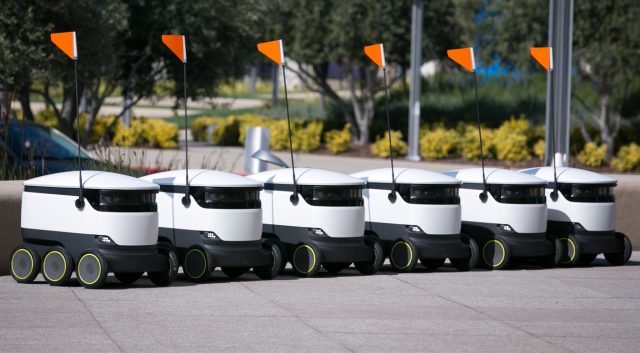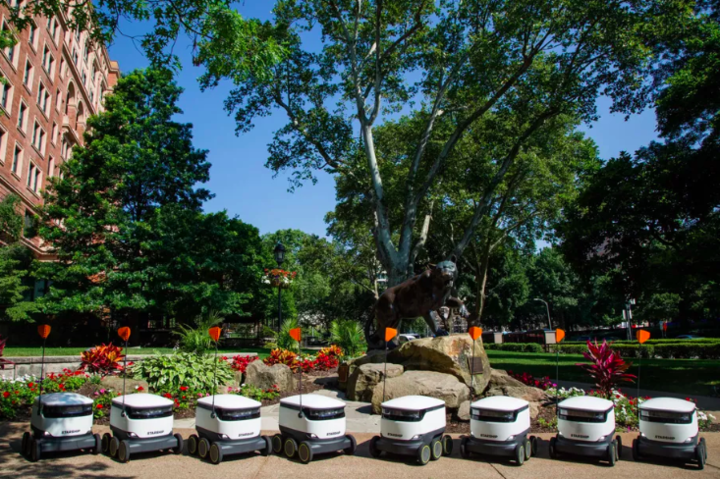More than 100 universities in the United States To start unattended delivery.
The $40 million Starship Technologies, Inc. is planning to work with more than 100 universities in the United States to promote robotic delivery services on campus.
This San Francisco-based startup has automated robotic delivery testing in more than 100 cities in 20 different countries since the launch of the robot in 2018.
The robot has traveled 4 million streets, 560,000 kilometers, and recently completed the 100,000th delivery.

These six-wheeled robots are equipped withCameras, radar, ultrasonic sensors and GPS, built-in complex computer vision and neural network systems to open the journey, scan the road, and identify obstacles on the road.
They are all electric, can carry up to 20 pounds of goods to the destination, people can use the app to open the box to get the items.
In addition, the robot’s delivery distance is 4-6 km, and the maximum speed can reach 6.4 km/h – it seems to be slower than the takeaway brother’s motorcycle or bicycle.
But the advantage of the automatic delivery robot is that it can be delivered every morning and evening. When you lie in the dormitory in the early morning, you want to order a takeaway. You can place an order at any time. It will also be delivered on time, not like now. Worried that it is too late for delivery, or when the takeaway brother runs errands late at night, it creates trouble for others.
Delivery items, including daily groceries, catering, etc., need to pay $1.99 per order, compared to the domestic distribution fee of about 5 yuan, it seems to be slightly more expensive.

The choice of university campus is because many people live in small spaces. They tend to order the food and sundries needed for life. As a younger generation, students are also the ideal initial customers to accept new things.
Additionally, the school has a lot of walking paths with clear boundaries that are good for robots. This is also a good environment to improve the autonomous driving technology, and the robot can deliver multiple times in a short time.
But the limitation is that users who live at the upper level can only go down to the door of the first floor to get the goods, because the robot can’t climb the stairs. Therefore, the company is currently mainly targeting small areas with low-rise houses and low-density areas.
However, Starship Chief Executive Lex Bayer believes that , future homes may create specialized ramps and doors for automated distribution robots, but this will take at least a while until the automatic robots become more popular.

Now, the company has allowed robots to automatically distribute food to students at George Mason University and Northern Arizona University, and they will be rolling out the service at the University of Pittsburgh and Purdue University in September.
The future plan is to deploy 25-50 robots on almost every university campus in the United States in 24 months, for a total of more than 5,000 robots.
After the initial expansion of the school, Starship Technologies intends to continue to push the business to corporate parks, industrial parks, etc., to carry some parts and small parcels.

In the next 10 years, online shopping may grow fivefold, and by 2025, American consumers will spend more than $100 billion on household items. Robotic distribution is one of the hottest areas of concern.
More than Starship Technologies robots, from the “Flying in the Sky” Amazon Prime Air drone to the “ground-walking” Scout unmanned delivery vehicle, the automatic delivery robot seems to be landing step by step at a visible speed.
Image from: Starship Technologies